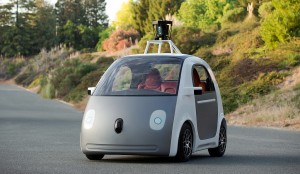Google plans to build between 100 and 200 prototypes in efforts of re-engineering the way we transport ourselves. These subcompact cars would have no steering wheel, no gas and no brake pedals, and no airbags. It is an automobile fit for two, relying on only sensors and computing power for operation. Does the notion of “no human needed” make you nervous too? The true driver-less car is here, folks. Get used to it! On the other hand, we wont be the ones driving this line of vehicles. Limited to just 25 miles per hour (mph), rolling out the line of cars next year doesn’t mean they would be commercially available. Rather, select operators would use them for further tweaking.


As a reminder, Google has already presented a line of driver-less cars to the public before. Such cars, like the Lexus SUVs, and Toyota Priuses outfitted with similar sensors and cameras, are not exactly self-driving. These require a “safety driver” in the front seat in part of their operation. The new prototypes take this idea to the next level by taking out any manual human participation. Simple buttons (via a smartphone app) will give direction to vehicle, telling it to start and stop, and give it a destination. These will be the only options the rider can control. As far as actually driving on public streets, the car would react to other cars and pedestrians on the road in making turns, stops, and other manipulations. This technology is based on computer programs that can make predictions regarding surrounding objects; sensors that contain cameras and radar for evaluating real-time occurrences. Apparently, the car will be able to see 600 feet in all directions.
I bet you’re wondering what the Google driver-less car will be made of. It will be made with two feet of soft, foam-like fascia on the front to “protect pedestrians and cyclists in the event of a crash”. Purpose of a vehicle that only reaches a max of 25 mph, is made partly from foam, has no airbags, and manipulates itself? Evidently, it is all about the alternative means of keeping occupants safe, such as reducing traffic-related incidents caused by distracted drivers. Also, these cars are meant for driving in urban and suburban settings only. The New York Times stated “The low speed will probably keep the cars out of more restrictive regulatory categories for vehicles, giving them more design flexibility”. Still five years from commercialization, hopefully Google can continue to successfully show these cars operate without incident. It is unclear whether Google will be manufacturing the vehicles or if it will lend the technology to car makers for design.

 Laptop & Tablet Parts
Laptop & Tablet Parts




















